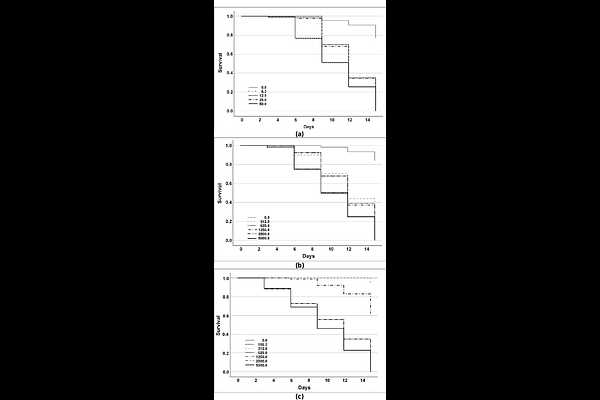Effects of Three Natural Dietary Compounds on Insect Pests

Effects of Three Natural Dietary Compounds on Insect Pests
Cabello, T.; Gamez, M.
AbstractEffective and sustainable pest management is a critical challenge in agriculture. This study evaluated the relative efficacy of three natural compounds -neem oil, boric acid, and gallotannin acid- against larvae of three pest species: Rhynchophorus ferrugineus (F.) (red palm weevil), Plodia interpunctella (Hubner) (Indian meal moth), and Spodoptera exigua (Hubner) (beet armyworm). Laboratory bioassays revealed distinct differences in larval survival and mortality across the species. Neem oil demonstrated high effectiveness against S. exigua larvae, achieving 100% mortality at all tested dietary concentrations, and moderate effectiveness against R. ferrugineus. In contrast, it had no significant effect on P. interpunctella. Boric acid was proved to be universally effective, leading to 100% mortality in all three species at its highest concentration. Gallotannin acid had species-specific effects on S. exigua but had negligible effects on R. ferrugineus and P. interpunctella. These findings highlight the potential of natural, low-toxicity compounds as alternatives to synthetic insecticides. Additionally, this study suggests new frontiers for investigating the role of the gut microbiota in mediating the effectiveness of these compounds. While the results provide promising insights into environmentally friendly pest control strategies, further research, including field trials and microbiological assessments, is needed to fully validate their application in agricultural settings. This work contributes to advancing sustainable pest management practices that reduce environmental impact while addressing critical agricultural needs.